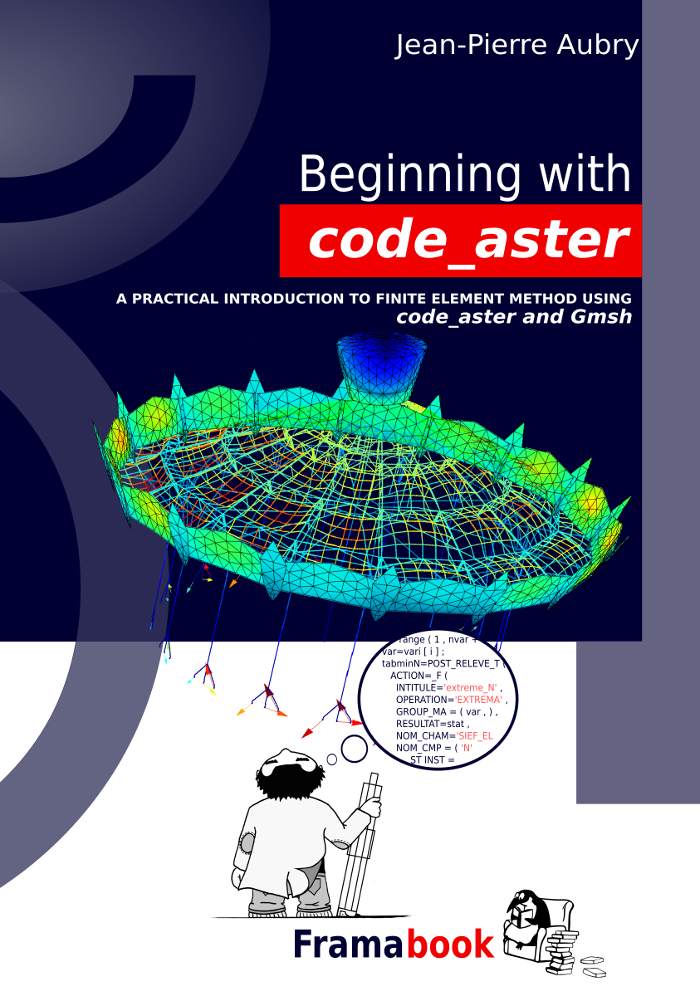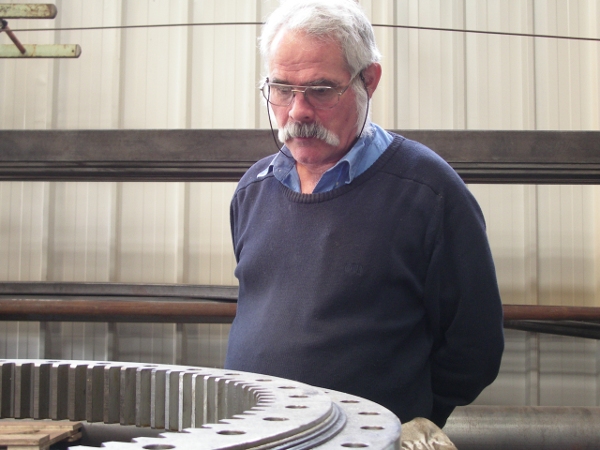In the crowd of Finite Element Software, Code_Aster ranks amongst the most powerful, but unlike it’s sibling it comes under GNU GPL license…

Beginning with Code_Aster intends to provide a step by step approach to ease the learning curve.This book focuses on practical solutions : how to put the problem, how to solve it and how to interpret the results. It is dedicated to mechanical problems, static, linear and non linear, including contact and friction. Together with modal and buckling analysis. With beams, rods, cables, plates and 3D solid models. As far as pre and post-processing are concerned Gmsh is introduced. If this book is primarily intended for the beginner, the experienced user may find some useful hints, here or there, throughout the chapters.
Title : Beginning with Code_Aster. A Practical Introduction to Finite Element Method Using Code_Aster and Gmsh
License : LAL 1.3 ; GNU FDL ; Creative Commons By-Sa
Price : 58 EUR
ISBN : 979-10-92674-03-3
First edition : December 2013, Framasoft
Second edition : January 2019, Framasoft
Format : paperback, 14,5 x 21 cm, pleine page, couleur
Weight : 690 gr.
Pages : 329 + xii
Time went on since the first edition of this book in late 2013, it is now time for a second edition.
This time has been used by the code_aster team to introduce many improvements with the related syntax changes.
This second edition tries to keep up to date with these changes.
Another rather important change has been the recent introduction of AsterStudy within salome_meca.
AsterStudy is quite a different affair, with a complete GUI it intends to ease up code_aster learning curve for beginners.
This book keeps to code_aster and strictly code_aster, with its own [cumbersome, not so cumbesome] way of editing the command file among other features.
Despite the word « Beginning » in its title this book presents some rather expert level methods for handling a study and some of these advanced features used in a few of the .comm example files are not [yet] available in AsterStudy GUI.
In fact this second edition sticks to my own way of dealing with a code_aster study after eleven years of practice.
And these eleven years were a delight !

Synopsis
De tous les logiciels dédiés aux éléments finis, Code Aster compte parmi les plus puissants, mais contrairement à ses semblables, il est placé sous licence GNU GPL.
Parce qu’il est puissant, il est complexe. Conçu pour être utilisé par les ingénieurs hautement compétents d’EDF, l’interface utilisateur de Code_Aster est spartiate. Et bien qu’elle soit riche, la documentation associée est le côté le plus lourd de l’affaire. Voilà pourquoi la courbe d’apprentissage est assez raide au début.
Beginning with Code_Aster propose une approche étapes par étapes afin de faciliter cet apprentissage.
L’ouvrage met l’accent sur les solutions pratiques : comment poser un problème, comment le résoudre et comment interpréter les résultats. Il est dédié aux problèmes de mécanique, statique, linéaire et non linéaire, avec contact et frottement. Y compris l’analyse modale et de flambement. Il y aura aussi des poutres, des tiges, des câbles, des assiettes et des modèles solides 3D.
En ce qui concerne les pré- et post-traitements, nous introduirons à Gmsh. Si ce livre s’adresse en premier lieu au débutant, l’utilisateur confirmé pourra glaner au fil des chapitres, ici ou là, quelques conseils utiles.
À propos de l’auteur
Né en 1947, Jean-Pierre-Aubry a débuté dans les années 1970 comme collaborateur de Philippe HARLE, architecte naval. Il est maintenant ingénieur à LaMachine. Il a acquis une grande expérience en conception structurelle dans des domaines très différents comme les voiliers, les véhicules de transport routier ou ferroviaire, les composants militaires, les citernes de matières dangereuses, les réservoirs à pression, et les grandes architectures de théâtre de rue.
Au long de sa carrière, il a développé une expertise dans les structures utilisant presque tous les matériaux disponibles, depuis le bois aux composites de fibre de carbone, ou encore l’acier omniprésent. Dès 1986, il utilise sur le terrain les logiciels d’analyse en éléments finis, dont ALGOR®, NISA®, des variantes de NASTRAN®, SAMCEF®, Code_Aster.

